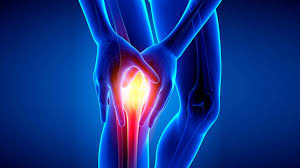Musculoskeletal disorders respond very well to acupuncture which is why ACC will help cover the cost of acupuncture treatments for an injury. My experience is that using electro-acupuncture at a particular microcurrent frequency speeds the recovery. But Manual acupuncture will also work.
Acupuncture vs Morphine. A recent study conducted by Grissa et al. compared the effectiveness of acupuncture versus morphine in the management of acute pain in the emergency department. A reduction of pain by 92% was observed in patients treated with acupuncture, while morphine-treated patients experienced only 78% reduction. In addition, acupuncture-treated patients had a much faster pain recovery time (an average of 16 min compared to 28 min in the morphine control group) (1)
The Biomedical science of acupuncture. (2) So what happens exactly when an acupuncture needle is placed around a joint or in a muscle? CGRP, a vasodilator, and responsible for the growth of new blood vessels, is attracted to the area surrounding the needles and helps to create a ‘soup’ of our body’s chemicals. In this ‘soup’ of blood are Histamines, Interleukin 6, and prostaglandins to reduce inflammation. Nerve Growth Factor is also present which helps to repair Peripheral Nerve Damage. White blood cells are there and help prevent infection. There are also many autoimmune system moderators creating an ideal condition for acupuncture to heal even complex autoimmune conditions like Rheumatoid Arthritis and Ankylosing Spondylitis.
Sports: Acupuncture may also benefit athletic training and performance. Surprisingly, this is done by moderating the autoimmune system, metabolism, and thyroid. www.acufinder.com/Acupuncture+Information/Detail/Acupuncture+for+Sports+Performance+Enhancement
The following research demonstrated acupuncture helped correct TH1/TH2 imbalance during the course of heavy load training. http://www.ncbi.nlm.nih.gov/pubmed/21644315
Osteoarthritis: Acupuncture treatment may help to relieve pain and improve function in patients with osteoarthritis by:
Increasing local microcirculation (Komori 2009), which aids the dispersal of swelling.
Stimulating nerves located in muscles and other tissues leads to the release of endorphins and other neurohumoral factors. This changes the processing of pain in the brain and spinal cord (Pomeranz 1987; Han 2004; Zhao 2008; Cheng 2009; Ahsin 2009);
Inhibiting pain through the modulatory effects of endogenous opioids (Uryu 2007; Ahsin 2009);
Regulating metabolism-related genes and pathways (Tan 2010)
Inhibiting the activity of cytokines that are mediators of inflammation, including interleukin (IL)-1, IL-6, and tumour necrosis factor (TNF)-alpha (Xu 2009; Wu 2010);
Reducing inflammation, by promoting the release of vascular and immunomodulatory factors (Zijlstra 2003; Kavoussi 2007);

